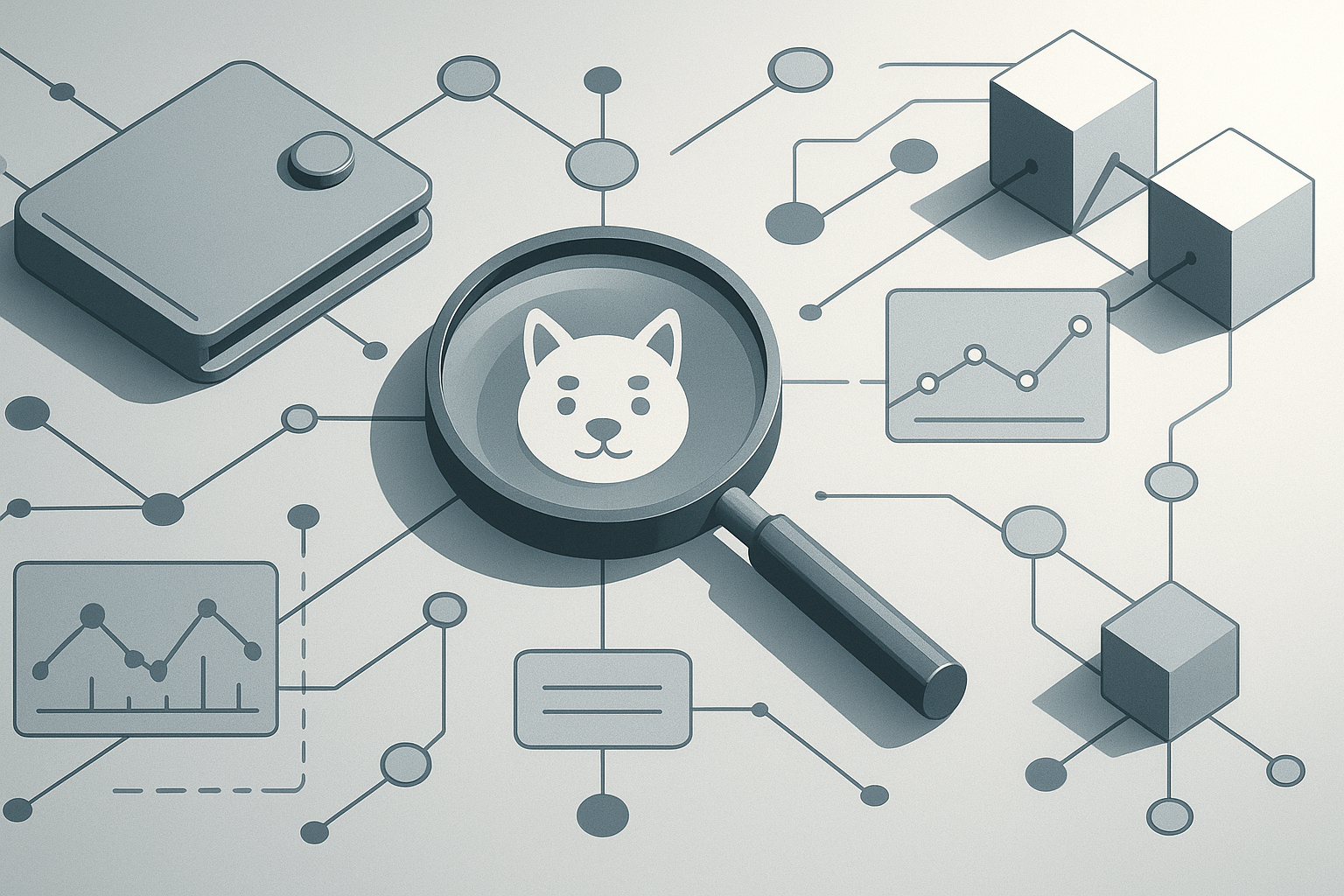Doginal Dog traded in a private sale for $100,000, a transaction reported by The Manila Times that drew swift attention from collectors and market watchers. This report presents a chance to examine what high-dollar private transfers mean for provenance, valuation, and publicly available records.
Become a Doc: Profile Ethereum wallets and discover their behavior.
Use WalletAutopsy.
Sale details and immediate reaction
The available coverage identified the result of a private agreement between parties, noting the price but not disclosing identifying information about buyer or seller. That absence of public identifiers is common in off-market transactions, where participants may prefer confidentiality for personal or strategic reasons. Private sale arrangements can still shape broader market perceptions when the price is significant and reported widely.
Why the transaction drew blue-chip discussion
The Manila Times framed the sale as confirmation that the piece holds a notable position among collectible works in the nonfungible token realm. Observers often use the term blue chip to describe assets that repeatedly attract high bids, sustained collector interest, and cultural recognition. Those criteria are subjective and rest on a mixture of market behavior, cultural relevance, and scarcity, rather than a single definitive measure.
How private deals differ from public marketplace sales
When an NFT sells on an open marketplace, the trade typically posts to a public ledger and becomes part of a transparent price history. Private agreements, by contrast, may not appear immediately on those same public channels. Industry participants note that private movements can be later settled on-chain or recorded via intermediary platforms, but the timing and visibility of any subsequent on-chain record vary. on-chain evidence therefore matters when attempting to confirm reported prices.
Provenance, verification and public records
Collectors and analysts rely on provenance to assess an item’s authenticity and prior ownership. In cases reported as private, that chain of custody may require additional verification, either through smart-contract metadata, transaction hashes, or third-party escrow documentation. Those who study the market turn to crypto analytics tools to reconcile reported figures with available blockchain entries and to identify whether a claimed sale was settled on-chain or handled off-chain.
Implications for valuation and market signals
A single high-value trade can influence perceptions of rarity and demand, but the effect depends on supporting evidence. Market participants often look for corroborating data points: repeat sales at comparable levels, sustained floor prices, and visible activity from distinct wallets. Without multiple corroborating transactions, observers treat a single private report as an informative but incomplete signal. Blue chip status gains credibility when repeated market behavior supports it.
Risks and areas requiring scrutiny
High-value NFT reports invite closer examination because private reports can be misreported, misunderstood, or lack supporting records. Analysts frequently check for related wallet movements and changes in related collections to determine whether a sale reflects genuine demand or other motivations. Those who track NFTs emphasize the importance of examining transaction receipts and wallet interactions before drawing conclusions about long-term value. Verification is the prudent first step for anyone assessing such a report.
Role of wallets and custody practices
Settlement and custody practices influence how a reported private sale appears to the wider market. Transfers that proceed through identifiable custody accounts or trusty exchanges leave a clearer trail than those routed through multiple custodial arrangements. Observers sometimes trace activity across crypto wallets to map ownership transitions and to detect whether a sale moved ether or tokens between known addresses. That type of tracing helps establish whether a reported price reflects a bona fide transfer.
How industry tools and reporting fit together
Reporting by general news outlets can raise awareness, while dedicated market data providers and on-chain monitoring services supply the technical evidence that supports or questions a claim. Combining traditional reporting with on-chain observation and analytics offers a fuller picture. Investigators use detailed transaction data, contract reads, and wallet histories to test whether a private claim aligns with publicly verifiable entries. Data provides the basis for more confident appraisal.
What collectors should consider now
Collectors weighing the report should confirm provenance and look for on-chain confirmation where possible. Those considering acquisition will want to review transfer history, contract metadata, and marketplace activity in the collection. Public reporting can accelerate interest, yet careful buyers rely on a combination of documentation and visible blockchain evidence before adjusting valuations. Due diligence remains essential.
Conclusion
The reported $100,000 private sale of a Doginal Dog NFT, as covered by The Manila Times, highlights how significant private transactions can influence public conversation about value and cultural relevance. The report serves as a reminder that observed prices and persistent market behavior together make a stronger case for any claim of blue-chip status. Observers and participants who monitor NFT markets will continue to watch for further confirmations, using on-chain records and crypto analytics to assess how this single reported sale fits into the broader picture.
Disclosure: This article relies on reporting by The Manila Times and public blockchain principles. It does not assert buyer or seller identities beyond what has been reported publicly.
